Health Promotion Board Press Release
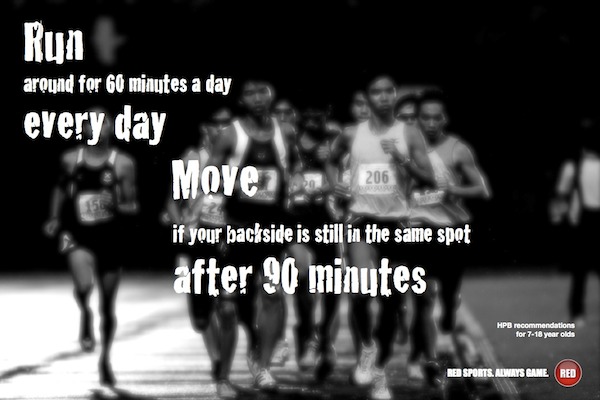
Image © Red Sports
Singapore, Monday, December 31 2012 — With the start of the new academic year, HPB today released new physical activity guidelines for Singapore’s youth and introduced for the first time physical activity guidelines for young children. This is to take into account their needs at different ages and development stages. These guidelines follow-on from the 150 minutes of physical activity a week guidelines developed for adults.
Increased participation in physical activity during one’s childhood and youth is directly linked to a lower prevalence of various chronic diseases later in one’s life. Physical activity has also been reported to improve academic performance including improved grades, time-management skills, concentration and attentiveness in class.
The new guidelines for young children aged below 7 are:
— For infants, physical activity should be encouraged particularly through floorbased play in safe environments;
— Children capable of walking unaided should be physically active for at least 180 minutes, spread throughout each day in safe environments;
— Limit total sedentary entertainment screen time (e.g. television and video games) to less than two hours per day.
In addition to being a critical period for the establishment of active behaviours into adulthood, as a child who is active is more likely to remain active in adolescence and adulthood, regular physical activity during early childhood helps in the development of social as well as motor skills, improves cognitive development, increases muscle and bone strength and encourages the maintenance of a healthy weight.
In updating the guidelines for children and the youth aged 7-18 years, HPB revised the physical activity recommendation from five or more days a week to daily.
In addition, a guideline relating to sedentary behaviours has now been included. The revised guidelines for children and youth aged 7-18 years are:
— Accumulate 60 minutes or more of moderate-to-vigorous-intensity activity every day, emphasising aerobic type physical activities;
— As part of the 60 minutes, vigorous-intensity physical activity should be incorporated at least three times per week including those that strengthen muscle and bone;
— Limit total sedentary entertainment screen time to less than two hours per day;
— Break up sedentary periods (except time spent sleeping) lasting longer than 90 minutes with five to 10 minutes of standing, moving around, active play or doing some physical activity.
Said Ang Hak Seng, Chief Executive Officer, HPB: “Overall we have done well in schools. However, we are looking into one area of concern which is children and youth indulging in an excessive sedentary entertainment screen time. Those who spend too much time in front of the television or computer may not be meeting our 60 minutes guidelines of moderate- to-vigorous-intensity activity daily.
“Inculcating the habit of physical activity daily from a young age is very important to improve their development and academic performance. Spending large amounts of time being sedentary has been associated with increased body fat, poor diet, impaired
cardiovascular health and the lower development of cognitive and motor skills. To help the school community to meet the new physical activity guidelines we willimplement a series of new, interactive initiatives to promote physical activity from pre-schools to secondary schools and institutions.”
To help nurture the habit of daily physical activity in our children, HPB will:
— Sign a MOU with the anchor operator of childcare centres and kindergartens as a joint commitment towards ensuring pre-schoolers meet the guidelines;
— Work with other pre-schools and institutions to roll out a series of educational resources aimed at helping children stay active through the day such as a series of fun dance workout DVDs, lesson plans to help the children understand the importance of being active and workshops to help train the educators and provide tips on physical activity for parents;
— Introduce a new school-based initiative called the Active School Programme which will encourage ‘active play’ among school-going children before or after the school day or during the recess break through positive peer pressure and the setting up of visual cues to encourage physical activity in schools;
— Enhance the physical activity component in the CHERISH Junior criteria to assist schools in establishing health promoting policies and providing opportunities for physical activity for the students.
With the new physical activity guidelines, HPB continues to build upon our existing health promoting environment that improves the well-being of children in schools. HPB’s CHERISH (Championing Efforts Resulting in Improved School Health) Framework was recently awarded a Special Recognition by the World Health Organization Regional Office for the Western Pacific. The award was presented as part of the Fifth Global Conference of the Alliance for Healthy Cities.
HPB’s CHERISH framework was cited as an exemplary national achievement in developing and implementing national accreditation and award systems for Healthy Settings. The Healthy Settings approach recognises the interconnection between existing human settings, the environments people are exposed to and health risks. The strategy of inculcating healthy behaviours from young is a key contributor to sustaining such behaviours into adulthood.
Building on the concept of a Health Promoting School and recognising that health promotion to youth is paramount, HPB has revised the CHERISH Framework in 2012. The framework sets quality standards for educational institutions to be healthy settings in rolling out health promotion activities for their students.
Through this process, CHERISH gives recognition to institutions that constantly strive to improve themselves as healthy settings for students, staff and community. Since its inception, the CHERISH framework has evolved to cover the entire student life stages, starting with mainstream primary and secondary schools/junior colleges, and extending to pre-schools and institutes of higher learning.

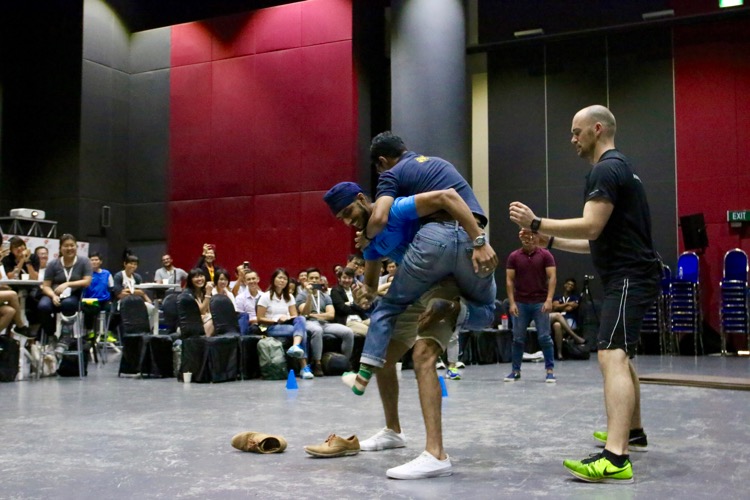

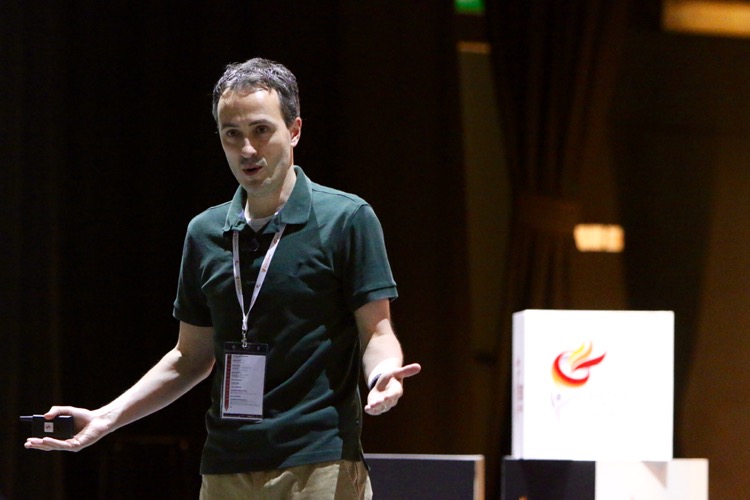
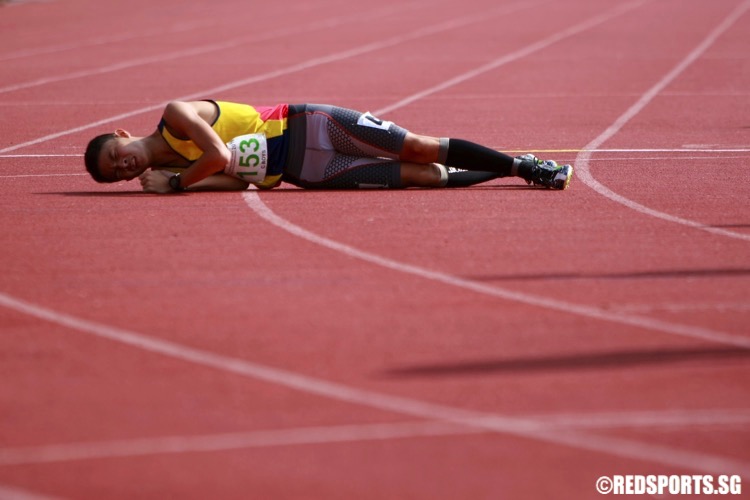
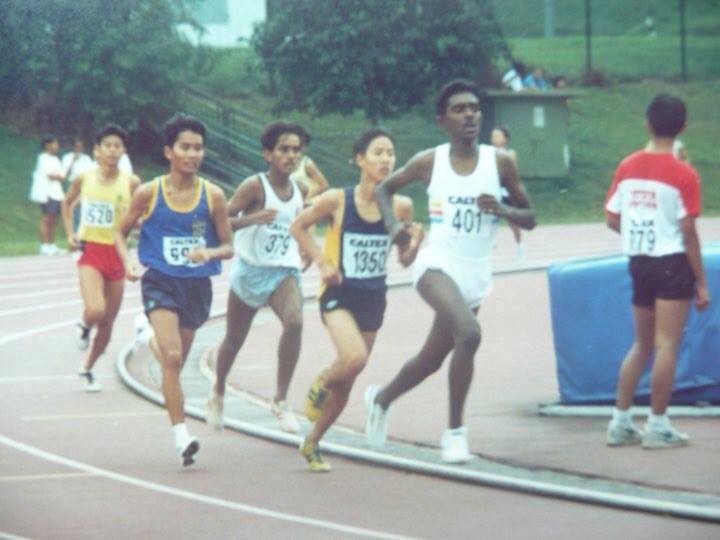
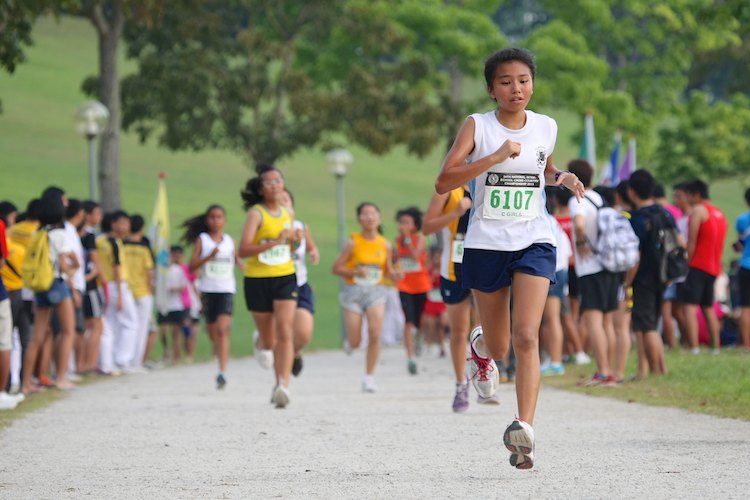
Leave A Comment